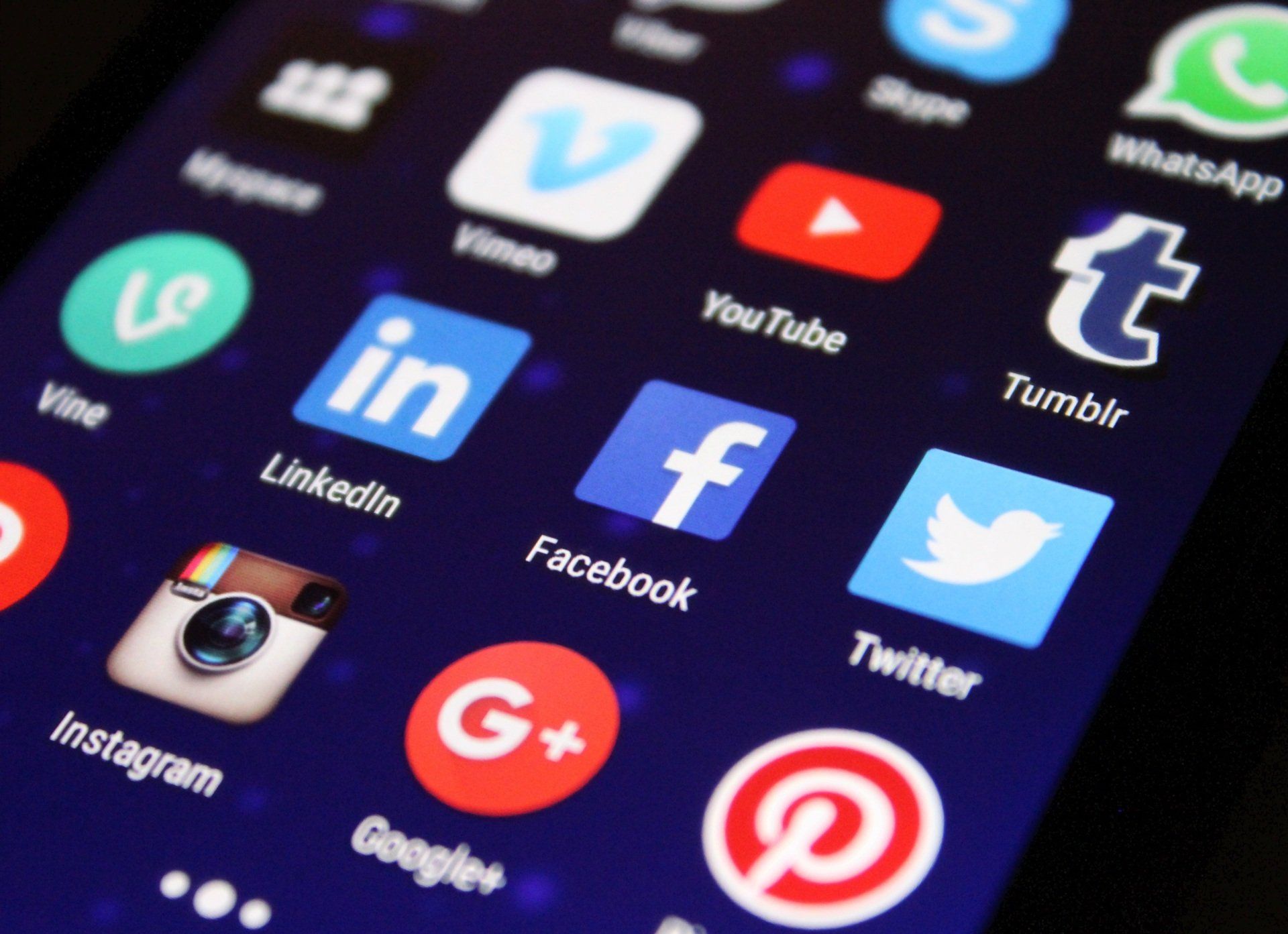Tailormann Website and Marketing Blog

In today's fast-paced digital landscape, social media has become an integral part of every business's marketing strategy. However, managing multiple social media platforms and consistently posting content can be a time-consuming and overwhelming task. This is where automation comes in. By leveraging the power of automation tools and implementing effective strategies, businesses can streamline their social media marketing efforts and achieve better results. In this article, we will explore the strategies and tools you can use to automate your social media marketing, saving time and maximizing your online presence. Introduction - The importance of social media marketing - Challenges of manual social media management - Benefits of automation Choosing the Right Platforms - Understanding your target audience - Selecting platforms that align with your goals - Evaluating platform-specific automation capabilities Content Planning and Scheduling - Developing a content calendar - Creating a diverse content mix - Utilizing scheduling tools for efficient posting Automated Posting and Publishing - Cross-platform posting - Best times to post on different platforms - Consistency and frequency in automated publishing Social Listening and Engagement - Monitoring brand mentions and keywords - Responding to comments and messages - Using automation to manage engagement effectively Data Analytics and Reporting - Tracking key performance metrics - Analyzing the effectiveness of automated campaigns - Making data-driven adjustments for better results Personalization and Targeting - Segmenting your audience for personalized content - Tailoring automated messages for different demographics - Implementing retargeting campaigns with automation Curating Relevant Content - Discovering and sharing industry-related content - Using content curation tools to streamline the process - Establishing authority through curated content Automating Ad Campaigns - Integrating social media ads with automation - Setting up automated ad schedules and budgets - Optimizing ad performance through automation Avoiding Automation Pitfalls - Maintaining a human touch in automated interactions - Monitoring for potential errors or miscommunications - Adapting to real-time events and trends Exploring Automation Tools - Hootsuite: A comprehensive social media management platform - Buffer: Simplifying content scheduling and publishing - Sprout Social: Streamlining social engagement and analytics - MeetEdgar: Recycling and re-sharing evergreen content - SocialBee: Curating, categorizing, and scheduling content Implementing Your Automation Strategy - Setting clear goals and objectives - Integrating automation seamlessly into your workflow - Training your team and optimizing processes Conclusion - The future of social media marketing automation - Embracing automation for growth and efficiency - Continuously adapting to changing algorithms and trends Introduction In the modern business landscape, social media marketing has evolved from a mere option to an absolute necessity. The ability to connect with a global audience in real-time, build brand awareness, and foster meaningful customer relationships has positioned social media at the forefront of marketing strategies. However, the demands of managing multiple platforms, creating content, and engaging with audiences can quickly become overwhelming. This is where the concept of social media automation steps in, offering a solution to these challenges while enabling businesses to harness the full potential of social media marketing. Choosing the Right Platforms Before diving into automation, it's crucial to identify the platforms that align with your brand's objectives. Understanding your target audience's preferences and behavior can guide your decisions. Different platforms cater to various demographics and user behaviors, so tailoring your strategy to each platform is essential for success. Once you've chosen the appropriate platforms, consider their automation capabilities. For instance, Instagram allows automatic posting through certain tools, while Twitter provides scheduling options. Content Planning and Scheduling Creating a well-thought-out content calendar is the foundation of successful social media automation. A content calendar outlines what content will be posted, when, and on which platforms. It ensures a consistent flow of content that resonates with your audience. When populating your calendar, strive for diversity in content types – including images, videos, blog posts, and user-generated content – to maintain engagement. Utilizing scheduling tools, such as Buffer or Hootsuite, streamlines the process by enabling you to schedule posts in advance, freeing up time for other strategic tasks. Automated Posting and Publishing Automated posting and publishing involve setting up a schedule for your content to be shared across your chosen social media platforms. Cross-platform posting ensures that your content reaches a wider audience without the need for manual intervention. Research the optimal posting times for each platform, as these can vary based on user activity patterns. Consistency is key; automated publishing ensures that your content is shared regularly, maintaining a steady online presence even when you're not actively posting. Social Listening and Engagement Automation isn't solely about scheduling posts; it extends to monitoring and engaging with your audience as well. Social listening involves tracking brand mentions, keywords, and conversations related to your industry. Automated tools can help you identify these interactions, allowing you to respond promptly and effectively. It's crucial to strike a balance between automated responses and genuine human interactions. Set up automated responses for common queries, but be ready to step in personally when a more nuanced conversation is required. Data Analytics and Reporting A significant advantage of automation is the ability to collect and analyze data efficiently. Track key performance metrics such as engagement rates, click-through rates, and follower growth. Automation tools often provide analytics dashboards that offer insights into the effectiveness of your campaigns. Regularly reviewing these metrics enables you to make data-driven decisions, adjusting your strategy to achieve better results. Personalization and Targeting Automation doesn't mean sacrificing personalization. In fact, it can enhance it. Segment your audience based on demographics, interests, and behaviors. Craft tailored messages that resonate with each segment. Automation tools can help deliver these messages at optimal times, increasing the likelihood of engagement. Additionally, implement retargeting campaigns to reach users who have interacted with your brand previously, nurturing them through the customer journey. Curating Relevant Content Content curation involves sharing valuable, industry-related content from external sources. This not only positions your brand as a knowledgeable resource but also saves time on content creation. Utilize content curation tools to discover and organize relevant content, then schedule it for sharing. However, remember to add your unique perspective when sharing curated content to maintain your brand's voice and authority. Automating Ad Campaigns Social media advertising is a potent tool for reaching specific target audiences. Automation can streamline the management of ad campaigns. Integrate your ad accounts with automation tools to schedule and optimize campaigns. Set up rules that automatically adjust budgets based on performance data. This ensures your ad spend is utilized effectively, targeting the right users at the right times. Avoiding Automation Pitfalls While automation offers numerous benefits, it's essential to strike a balance. Avoid robotic interactions by infusing a human touch into your automated responses. Regularly monitor automated processes for errors or miscommunications. Moreover, remain adaptable to real-time events and trends, ready to pivot your strategy when necessary. Exploring Automation Tools Several tools specialize in social media automation, each offering unique features. Hootsuite provides comprehensive social media management, while Buffer excels in content scheduling. Sprout Social offers engagement tracking and analytics. MeetEdgar focuses on recycling evergreen content, and SocialBee excels at categorizing and scheduling diverse content. Implementing Your Automation Strategy Before diving into automation, define clear goals and objectives for your campaigns. Integrate automation seamlessly into your workflow, ensuring it enhances your strategy rather than replacing genuine interactions. Train your team to use automation tools effectively, and continually optimize your processes as you gather more insights. Conclusion The future of social media marketing undoubtedly involves automation. Embracing this trend can lead to enhanced efficiency, increased engagement, and improved results. As algorithms and trends evolve, the ability to adapt your automation strategy will remain crucial. By following the strategies outlined in this article and leveraging the power of automation tools, you can position your brand for success in the ever-evolving landscape of social media marketing.

Traffic is arguably the most difficult part of any online business because traffic success is ultimately dependent on whether or not people enjoy your brand. There are technologies that help get traffic but the best way to get high quality traffic is classic old school promotion! Share your links with friends and family by word-of-mouth marketing or traditional methods like flyers in public places. Ultimately the reason most people get stuck at this final step is because they have trouble finally promoting their product. There is a misunderstanding that if you build a website with 10 good blog posts then the traffic will start flooding in. It is just not the case though. You have to take the time and effort to promote your website. Make a social media account, make business cards or flyers with your website name on it as well as share those too! It might seem like hard work but long term sales will be worth all of that promotion you put in. Here are three ideas outside of your website to gain more attention for your business. Meetup.com group and events. Cold calling. Trade shows or virtual events. Note these all require the entrepreneur or business owner to make direct contact with a potential lead. In the early days of your business none will know about your website, so it is crucial you make connections organically first through promotion. The key point here is to avoid the psychology that is blocking you from promoting your business. “Why would anyone ever buy from me?” Instead of focusing on the negative blockers, just have fun with it and experiment, if you let fear grip it will tell you never to release your product and gain more traffic. There are two categories of traffic paid and F ree . Paid Traffic I do highly suggest exploring paid options early on. Remember this is a business. You should have marketing budget in your spreadsheet. Even if it is $10.00 per week it is good to explore. We recommend 3 forms of paid traffic: Facebook Google Solo Ads Facebook paid traffic It is very easy to get into. You open a Facebook account, Start a page, and start promoting content. You can pinpoint target your audience. You can track your spending and conversion. Google It is a little more involved to get started with Google Ad’s. Google is still the number 1 search engine, so it can be beneficial to try some Google ads. Solo Ads Solo ads is a powerful email marketing method used by many online business people. With solo ads, you pay to send your “swipe copy” to another person’s email list. Swipe copy is content you have pre-written for the person sharing your ad. This can be very powerful. Free Traffic aka Organic Traffic One key feature of traffic is the compounding effect the internet has. Organic traffic can be considered as someone searching in Google for your keyword, your webpage ranking in the top 5 for that search, and the person “organically” visiting your site. Or You can think about how your site or more importantly brand, exists outside of search engines. Do people want to share your content, for Free? Is your content so good and so full integrity, that people WANT to be a part of it. In a lot of ways the two are the same. You need to deliver to your audience or customers. They want value in whichever way you promised you would provide it. Are you a guitar instructor? Then the entire point of your system should be to show your traffic unequivocally that you indeed have the experience and desire to share with them how to pay guitar. If you do it with passion and integrity, eventually the Free Organic traffic will begin to snowball.

A.I. Websites work for you 24/7/365 getting you more customers than a conventional website can. Businesses that leverage personalized content on their site average a 19% increase in sales. Most important AI works automatically which leaves you with more time to focus on your business, or maybe even take more time for yourself, imagine that!

